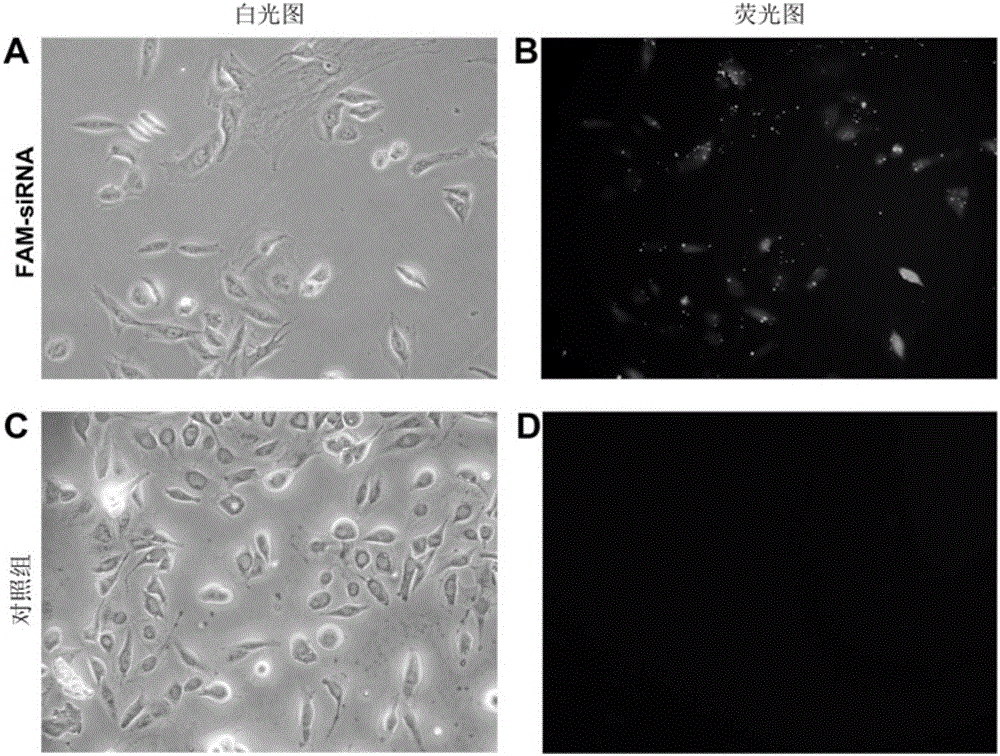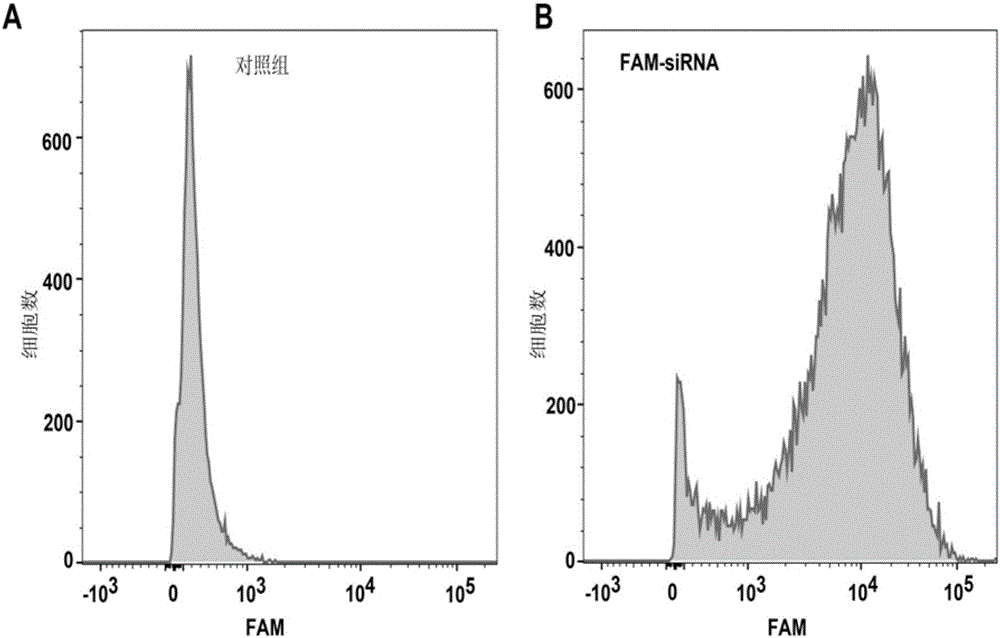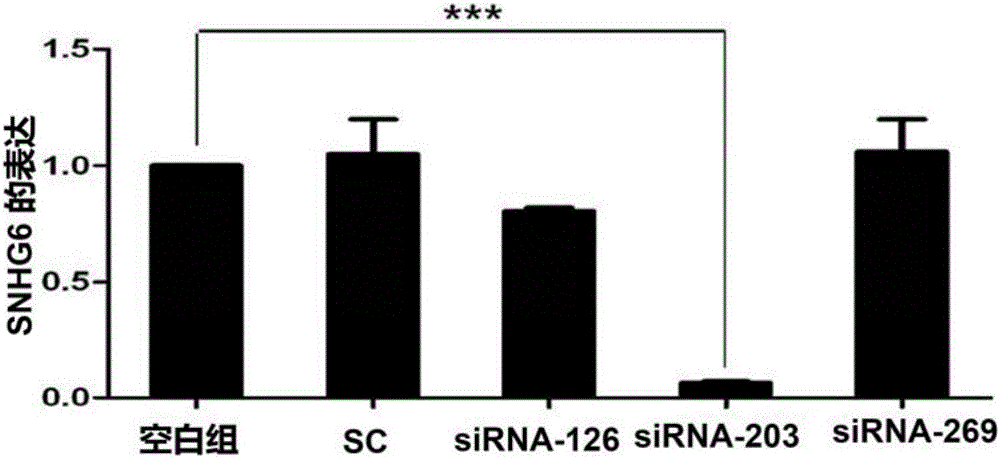SiRNA-203 for inhibiting expression of long non-coding RNA SNHG6 and proliferation of hepatoma cells and application thereof
A siRNA-203, liver cancer cell technology, applied in siRNA-203 and application fields, can solve problems such as poor prognosis of liver cancer, and achieve the effects of inhibiting proliferation, great application prospects and economic value
- Summary
- Abstract
- Description
- Claims
- Application Information
AI Technical Summary
Problems solved by technology
Method used
Image
Examples
Embodiment 1
[0024] (1) Design and obtain siRNA
[0025] Search the SNHG6 gene sequence (ACCESSIONNR_002599.1) in GenBank (http: / / blast.ncbi.nlm.nih.gov / Blast.cgi), and then design siRNA against SNHG6. At the same time, a non-silencing scrambled control (SC) control 19ntsiRNA with no homology to the target gene sequence was designed.
[0026] Select 3 designed siRNAs and designed SC sequences for synthesis, as follows:
[0027] ①siRNA-126:
[0028] The sense strand sequence is: 5'-GAAGGUGUAUGAAAGUCAUTT-3';
[0029] The antisense strand sequence is: 5'-AUGACUUUCAUACACCUUCTT-3';
[0030] ②siRNA-203:
[0031] The sense strand sequence is: 5'-CGGCAUGUAUUGAGCAUAUTT-3';
[0032] The antisense strand sequence is: 5'-AUAUGCUCAAUACAUGCCGTT-3';
[0033] ③siRNA-269:
[0034] The sense strand sequence is: 5'-CUGCUUCGUUACCUCAAGUTT-3';
[0035] The antisense strand sequence is: 5'-ACUUGAGGUAACGAAGCAGTT-3';
[0036] ④SCRNA:
[0037] The sense strand sequence is: 5'-UUCUCCGAACGUGUCACGU-3';
[0...
Embodiment 2
[0065] The results of the example prove that only siRNA-203 has an interference effect on SNHG6. This example shows the biological effect of siRNA-203 down-regulating the expression of SNHG6 in MHCC-LM3 cells. Including changes in cell proliferation and apoptosis.
[0066] (1) Cell proliferation detected by CCK-8 method: Transfect siRNA-203 and SC (3 μg of RNA respectively) into MHCC-LM3 cells according to step (3) of Example 1, and take each group immediately after transfection Cells about 1 x 10 3 Take 3 wells in parallel for each group, put them in the incubator for 1, 2, 3, 4, 5, 6 days, add 10 μl of CCK-8 solution (Dojin Institute of Chemistry, Japan), and incubate at 37°C for 2h, at 450nm The OD value of each group was detected, and the inhibition rate was calculated. The results showed that compared with each control group, the siRNA-203 group could significantly inhibit the proliferation of cells (Table 5, Figure 4 ).
[0067] Table 5 CCK-8 method detects the effe...
PUM
 Login to View More
Login to View More Abstract
Description
Claims
Application Information
 Login to View More
Login to View More - R&D
- Intellectual Property
- Life Sciences
- Materials
- Tech Scout
- Unparalleled Data Quality
- Higher Quality Content
- 60% Fewer Hallucinations
Browse by: Latest US Patents, China's latest patents, Technical Efficacy Thesaurus, Application Domain, Technology Topic, Popular Technical Reports.
© 2025 PatSnap. All rights reserved.Legal|Privacy policy|Modern Slavery Act Transparency Statement|Sitemap|About US| Contact US: help@patsnap.com



